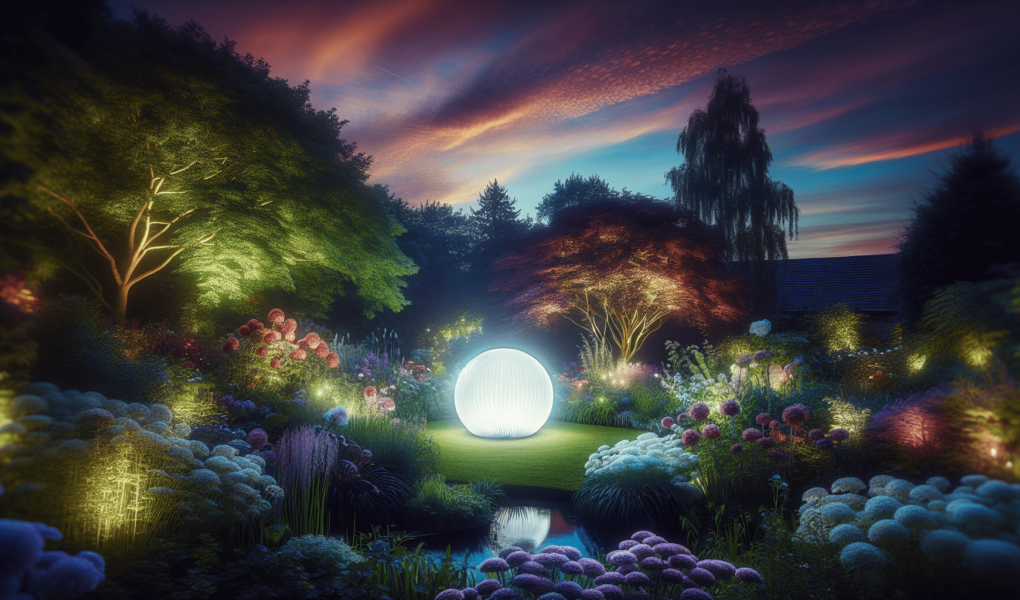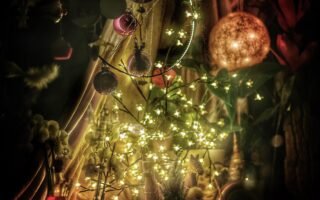Imagine coming home after a long day, and as you approach your house, you’re greeted by a captivating display of lights that beautifully illuminate your entire landscape. The soft glow highlights the architectural features, lush greenery, and pathways, creating a magical ambiance that instantly transports you to a tranquil oasis. In this article, we explore innovative landscape lighting concepts that can transform your outdoor space into a breathtaking retreat and enhance the beauty and functionality of your home. From subtle moonlighting to dramatic uplighting, we’ll delve into various techniques that will inspire you to create a stunning outdoor environment that you’ll never want to leave. So, get ready to reimagine your landscape and discover the power of artistic illumination.

1. Importance of Landscape Lighting
Landscape lighting plays a crucial role in enhancing the beauty of outdoor spaces, improving safety and security, and extending usable outdoor hours. Whether you have a cozy backyard, a sprawling garden, or a stunning front yard, landscape lighting can transform the space into a magical and inviting atmosphere.
1.1 Enhances the Beauty of Outdoor Spaces
Imagine stepping into your backyard on a warm summer night and being greeted by a beautifully lit garden. Landscape lighting not only illuminates your outdoor spaces but also highlights its unique features. By strategically placing lights around architectural structures, trees, and plants, you can create stunning focal points and add depth and dimension to your landscape.
1.2 Improves Safety and Security
Another important aspect of landscape lighting is its ability to improve safety and security. Illuminating pathways, stairs, and entrances with well-placed lighting fixtures ensures that you and your guests can navigate through your property safely, even in the dark. Moreover, a well-lit outdoor space deters potential intruders, providing an added layer of security to your home.
1.3 Extends Usable Outdoor Hours
Don’t let the setting sun dictate when you can enjoy your outdoor spaces. Landscape lighting allows you to extend your usable outdoor hours, providing a cozy and inviting ambiance even after dark. Whether you want to host evening gatherings, enjoy a quiet moment under the stars, or simply relax outdoors, landscape lighting ensures that you can make the most of your outdoor living area at any time of the day or night.
2. Basics of Landscape Lighting
To create the perfect ambiance in your outdoor spaces, it’s important to understand the basics of landscape lighting. This includes learning about different types of lighting, planning the lighting layout, and selecting the right fixtures.
2.1 Understanding Different Types of Lighting
There are various types of lighting techniques that can be used to achieve different effects in your landscape. These include moonlighting, silhouetting, shadowing, grazing, pathway accent lighting, up lighting, and down lighting. Each technique brings its own unique charm and can be used to highlight specific elements in your outdoor space.
2.2 Planning the Lighting Layout
Before installing landscape lighting, it’s essential to plan out the lighting layout. Consider the key focal points, such as trees, plants, sculptures, and architectural elements, and determine how you want to highlight them. Create a lighting design that balances functionality, aesthetics, and energy efficiency.
2.3 Selecting the Right Fixtures
Choosing the right fixtures is crucial for achieving the desired lighting effects in your landscape. Consider the size, style, and material of the fixtures to ensure they complement your outdoor spaces. LED fixtures are a popular choice due to their energy efficiency, longevity, and versatility.

3. Innovative Lighting Techniques
To take your landscape lighting to the next level, explore innovative lighting techniques that can add a touch of artistry and drama to your outdoor spaces.
3.1 Moonlighting
Moonlighting involves placing lights high up in trees to mimic the natural effect of moonlight filtering through the branches. This creates a soft and ethereal glow, casting beautiful shadows and adding depth to your landscape.
3.2 Silhouetting
Silhouetting involves placing a light behind a featured object, such as a sculpture, to create a striking silhouette against a backdrop. This technique brings a sense of mystery and drama to your outdoor space.
3.3 Shadowing
Shadowing is achieved by placing a light in front of an object, projecting its shadow onto a surface behind it. This technique adds an artistic and dramatic element by emphasizing the unique shapes and textures of plants, trees, or architectural features.
3.4 Grazing
Grazing involves placing a light close to a textured surface, such as a stone wall, to highlight its texture and create depth. This technique brings out the intricate details of your hardscape elements, giving them a three-dimensional effect.
3.5 Pathway Accent Lighting
Pathway accent lighting provides illumination along walkways and driveways, ensuring safe navigation through your outdoor space. By using low-level fixtures, you can create a subtle and inviting glow that guides guests to your front entrance or leads them through your garden.
3.6 Up Lighting
Up lighting involves placing lights at the base of trees, shrubs, or architectural features, projecting light upward to create a dramatic effect. This technique can add height, depth, and visual interest to your landscape, making it appear larger and more dynamic.
3.7 Down Lighting
Down lighting is the opposite of up lighting, where lights are placed high above and cast downward. This technique creates a soft and diffused illumination, ideal for highlighting seating areas, patios, or outdoor dining spaces.
4. Importance of Color Temperature
When selecting the right lighting for your landscape, color temperature plays a crucial role in setting the desired ambiance and achieving the desired mood.
4.1 Determining the Desired Ambiance
Consider the overall mood and ambiance you want to create in your outdoor spaces. For a cozy and intimate setting, warmer color temperatures, such as 2700K to 3000K, are ideal. Cooler color temperatures, ranging from 4000K to 5000K, create a brighter and more energizing atmosphere, perfect for entertaining or highlighting architectural features.
4.2 Warm vs. Cool Lighting
Warm lighting, characterized by its yellow or amber hue, creates a sense of comfort and relaxation. It is often used for creating a cozy and inviting ambiance in outdoor seating areas or intimate gardens. Cool lighting, on the other hand, produces a whiter, bluish light that adds a contemporary and refreshing touch to your landscape.
4.3 Creating Contrast and Drama
The color temperature of your landscape lighting can also be used to create contrast and drama. For example, combining warm lighting with cooler lighting can draw attention to specific areas or objects, adding visual interest and depth to your outdoor spaces.
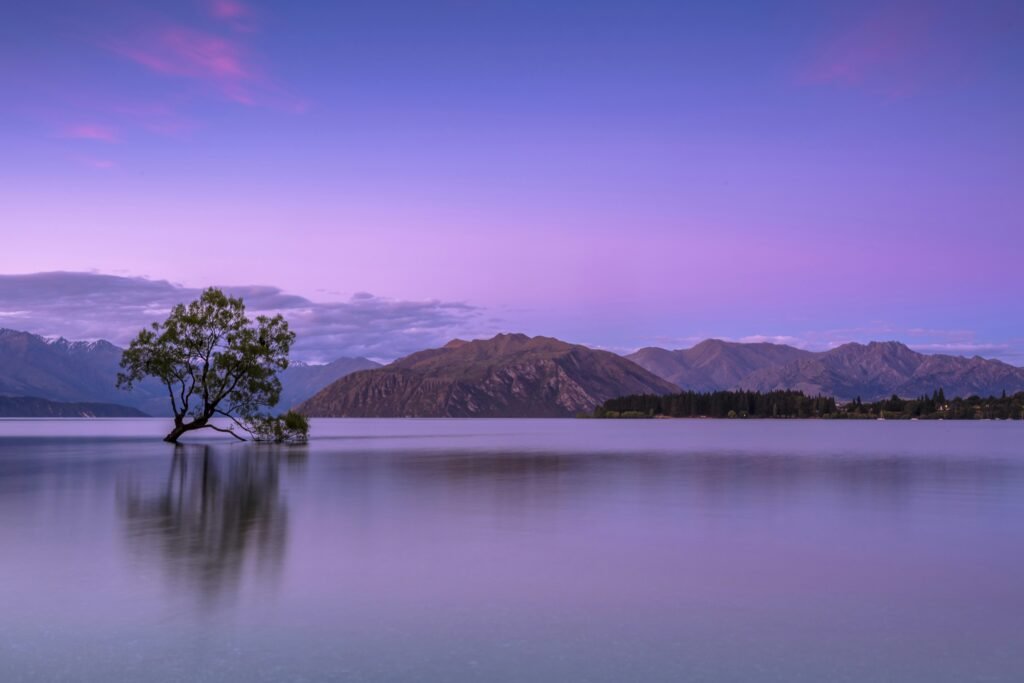
5. Integrating LED Technology
LED technology has revolutionized the world of landscape lighting, offering numerous benefits over traditional lighting options.
5.1 Energy Efficiency and Longevity
LED fixtures are incredibly energy-efficient and consume significantly less electricity compared to traditional incandescent or halogen bulbs. This not only reduces your energy bills but also minimizes your carbon footprint. LED bulbs also have a much longer lifespan, often lasting up to 50,000 hours, reducing the frequency of bulb replacements and maintenance.
5.2 Customization and Control Options
LED lighting allows for greater customization and control options. You can easily adjust the brightness and color temperature of LED fixtures, allowing you to create different moods and atmospheres in your outdoor spaces. Some LED systems also offer programmable settings or dimming capabilities, providing even more flexibility and versatility.
5.3 Choosing the Right LED Fixtures
When selecting LED fixtures, consider factors such as wattage, color rendering index (CRI), and beam angle. Higher wattage bulbs produce more light, while a higher CRI ensures accurate color representation. The beam angle determines the spread and direction of light, allowing you to tailor the lighting to specific areas or features.
6. Utilizing Smart Lighting Systems
Take your landscape lighting to the next level by integrating smart lighting systems into your outdoor spaces.
6.1 Wireless Control and Automation
Smart lighting systems allow you to control your landscape lighting wirelessly through a smartphone or tablet. You can adjust the brightness, change colors, or schedule lighting scenes from anywhere, providing convenience and flexibility.
6.2 Scheduling and Scene Customization
With smart lighting, you can program schedules and timers, ensuring that your outdoor spaces are beautifully illuminated when you need them to be. Smart systems also allow you to create customized lighting scenes for different occasions or moods, giving you full control over the ambiance of your landscape.
6.3 Integrating with Home Automation
By integrating your landscape lighting with your home automation system, you can create a seamless and synchronized lighting experience. Sync your outdoor lights with your indoor lighting or other automated elements, such as music or security systems, to enhance the overall atmosphere and functionality of your outdoor spaces.
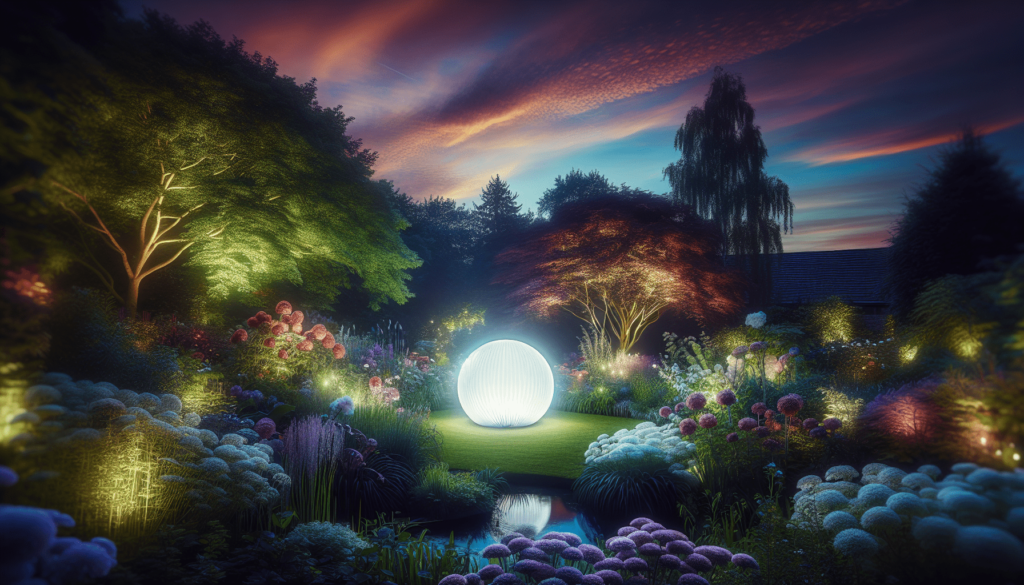
7. Combining Lighting with Other Elements
To create a truly captivating outdoor environment, consider integrating lighting with other elements in your landscape.
7.1 Water Features and Lighting
Illuminate water features, such as fountains, ponds, or waterfalls, to create a mesmerizing effect. Underwater lighting can enhance the beauty and tranquility of the water, while above-water lighting can highlight the flowing movement of the water and create a captivating focal point.
7.2 Landscape Sculptures and Lighting
Lighting can bring life to your landscape sculptures, turning them into stunning art pieces. By placing lights strategically around sculptures, you can create dramatic shadows, emphasize textures, and add an element of intrigue to your outdoor space.
7.3 Using Plants and Trees as Light Sources
Take advantage of the unique shapes and textures of plants and trees by using them as natural light sources. Installing up-lights at the base of trees or placing well lights near plants can create a beautiful interplay of light and shadow, showcasing the natural beauty of your landscape.
8. Addressing Environmental Considerations
When designing your landscape lighting, it’s essential to consider the environmental impact and take steps to minimize any negative effects.
8.1 Minimizing Light Pollution
Light pollution refers to the excessive or misdirected artificial light that interferes with the natural darkness of the night sky. To minimize light pollution, use fixtures with shields or covers that focus the light downwards and reduce unnecessary light spill.
8.2 Using Dark Sky Compliant Fixtures
Dark sky compliant fixtures are designed to reduce light pollution by minimizing upward light output. These fixtures ensure that the majority of the light is directed downward, preserving the quality of the night sky and protecting the natural habitat of nocturnal animals.
8.3 Considering Wildlife Impact
When designing your landscape lighting, consider the impact it may have on local wildlife. Avoid using bright lights near nesting or roosting areas, as this can disrupt the natural behavior and habitats of nocturnal animals. Opt for softer lighting options or motion-activated fixtures to minimize any disturbance.
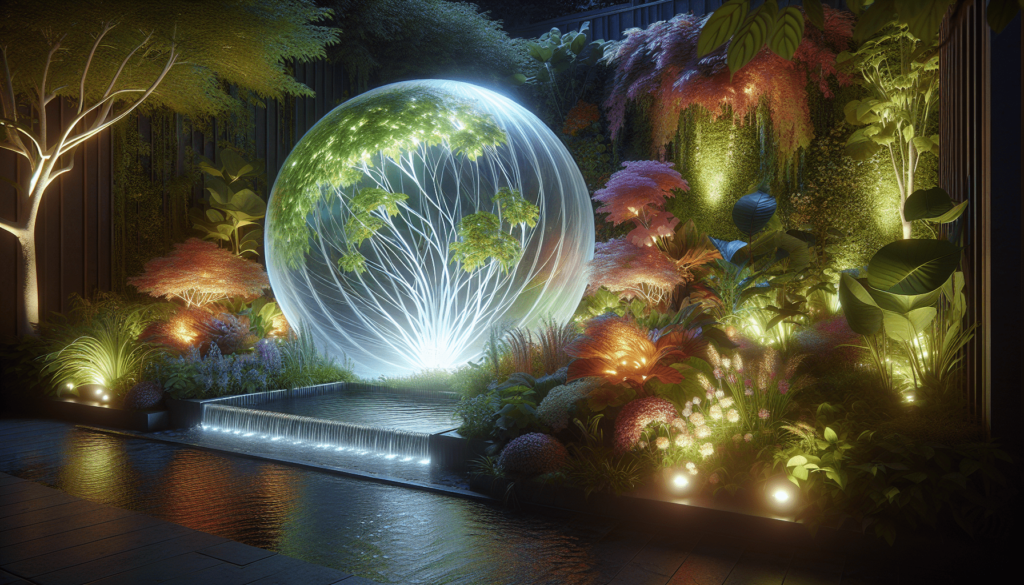
9. Creative Ideas for Special Effects
Landscape lighting provides endless opportunities for creating special effects and adding a touch of magic to your outdoor spaces.
9.1 Festive Lighting for Holidays and Events
Make your outdoor spaces even more enchanting during special occasions or holidays by incorporating festive lighting. String lights, lanterns, or specialty fixtures can create a warm and inviting atmosphere, enhancing the joy and celebration of the event.
9.2 Light Art Installations
Get creative with light art installations in your landscape. Install LED strips, projectors, or interactive elements that create stunning visual displays. Light art installations can transform your outdoor space into a gallery of lights, offering a unique and immersive experience.
9.3 Creating Magical Gardens
Transform your garden into a magical oasis by using fairy lights, lanterns, or color-changing fixtures. Create hidden pockets of light, pathways lined with whimsical lighting, or embrace a mystical theme with dramatic and enchanting lighting effects. With a bit of creativity, your garden can become a breathtaking and otherworldly escape.
10. Maintenance and Upkeep
Proper maintenance and upkeep are essential for preserving the beauty and functionality of your landscape lighting.
10.1 Cleaning and Replacing Bulbs
Regularly clean your lighting fixtures to remove dirt, debris, and any buildup that may affect the quality of light. Replace bulbs as needed to ensure consistent illumination throughout your outdoor spaces.
10.2 Inspecting and Repairing Wiring
Periodically inspect the wiring and connections of your landscape lighting system to ensure they are in good condition. Repair any damaged wiring or connections promptly to prevent potential safety hazards and maintain the functionality of your lighting.
10.3 Updating Lighting Design as Landscaping Evolves
As your landscape evolves and grows, it’s important to update your lighting design accordingly. Trim trees and plants that may obstruct the lighting, add new fixtures to highlight new features or elements, and adjust the lighting layout to accommodate any changes in your outdoor spaces.
In conclusion, landscape lighting is not just about illuminating your outdoor spaces; it’s about creating a magical and inviting atmosphere. By understanding different lighting techniques, considering color temperature, embracing LED technology, and integrating smart lighting systems, you can transform your landscape into a captivating and versatile outdoor haven. With proper maintenance and a touch of creativity, your landscape lighting will continue to add beauty, safety, and functionality to your outdoor spaces for years to come.
